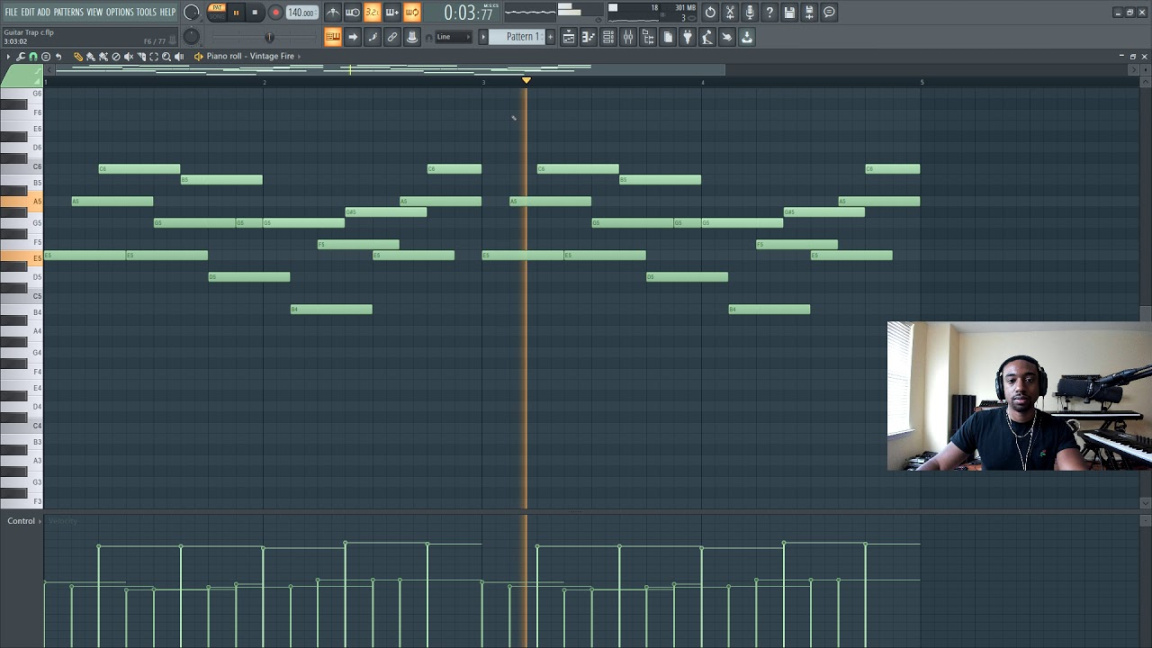—
Guitar Chord Progressions in Trap: From Simple to Sinister
Trap music, born from the streets and infused with a raw, gritty energy, has taken over the mainstream. And while the driving 808s and snappy hi-hats often steal the spotlight, the underlying chord progressions play a crucial role in setting the mood. If you’re a guitarist looking to tap into this sound, understanding these progressions is essential.
The Foundation: Simple and Repetitive

Trap, at its core, thrives on simplicity. Think about those hypnotic beats that loop for minutes on end. The chords follow a similar philosophy. You’ll often find basic triads and simple progressions repeated throughout the track. This repetition creates a trance-like state, allowing the listener to get lost in the groove.
Minor Keys Reign Supreme
A key characteristic of trap is its dark, often melancholic vibe. This is largely achieved through the use of minor keys. The natural minor scale, with its distinctive flattened third, sixth, and seventh intervals, lends itself perfectly to the genre’s sinister undertones. Common keys include A minor, E minor, and C minor.
The Classic i-VII-VI Progression
One of the most ubiquitous progressions in trap, and indeed in many genres, is the i-VII-VI progression. In a minor key, this translates to something like Am-G-F in the key of A minor. This progression creates a sense of movement while maintaining that dark, brooding atmosphere. It’s simple, effective, and endlessly adaptable.
Adding Flavor with Inversions
While simple triads are the bedrock of trap chords, inversions can add depth and complexity. Instead of always playing the root position, try inverting the chords. For example, in Am, you could play Am in root position, then Am/C (first inversion) and Am/E (second inversion). This creates smoother transitions between chords and adds a subtle harmonic interest.
The Power of Power Chords
Power chords, those gritty two-note chords, are another staple of trap guitar. They provide a raw, aggressive sound that perfectly complements the genre’s energy. Power chords are typically built on the root and fifth of a chord, and they’re incredibly versatile. They can be used to create heavy riffs, driving basslines, or even atmospheric textures.
Experimenting with Seventh Chords
While triads are common, don’t be afraid to experiment with seventh chords. Minor seventh chords, in particular, add a touch of sophistication and melancholy. For example, Am7, Em7, and Dm7 can create rich, evocative harmonies. Dominant seventh chords, like G7, can also be used to add tension and resolution.
The Role of Rhythm and Syncopation
It’s not just about the chords themselves; it’s also about how you play them. Trap guitar often features syncopated rhythms and off-beat accents. Experiment with different strumming patterns and rhythmic variations to create a unique groove.
Layering and Textures
In modern trap production, layers are everything. Don’t be afraid to double or even triple your guitar parts, creating thick, layered textures. You can also experiment with effects like reverb, delay, and distortion to further enhance the sound.
Using Arpeggios and Melodic Lines
While chord progressions provide the harmonic foundation, arpeggios and melodic lines can add a sense of movement and interest. Try arpeggiating the chords, playing individual notes of the chord in a sequence. You can also create simple melodic lines that complement the overall harmony.
The Influence of Hip-Hop and R&B
Trap music draws heavily from hip-hop and R&B, and this influence is evident in its chord progressions. You’ll often hear elements of soul and funk, with smooth chord changes and lush harmonies. Listen to classic hip-hop and R&B tracks to get a sense of these influences.
Adapting to Different Subgenres
Trap is a diverse genre with many subgenres, each with its own unique sound. From the hard-hitting beats of drill to the more melodic sounds of future bass, the chord progressions vary significantly. Pay attention to the specific subgenre you’re working in and adapt your playing accordingly.
Thinking Outside the Box: Unusual Progressions
While the i-VII-VI progression is a classic, don’t be afraid to experiment with more unusual chord progressions. Try using diminished chords, augmented chords, or even poly chords to create unique and unexpected sounds. The key is to experiment and find what works for you.
The Importance of Dynamics
Dynamics, the variation in volume, are crucial in trap guitar. Don’t play everything at the same volume. Use dynamics to create contrast and build tension. You can also use volume swells and other techniques to add texture and interest.
Finding Your Own Voice
Ultimately, the best trap guitar playing comes from finding your own voice. Experiment with different chords, rhythms, and effects until you find a sound that’s uniquely yours. Don’t be afraid to break the rules and push the boundaries.
Conclusion
Trap guitar, while often overshadowed by the beats, offers a rich and diverse landscape for exploration. From the simple, repetitive progressions that form the genre’s foundation to the more complex harmonies and textures that add depth and sophistication, there’s a world of sonic possibilities waiting to be discovered. By understanding the fundamentals of minor keys, inversions, power chords, and rhythmic variations, you can begin to craft your own unique trap sound. Remember to experiment, listen to a wide range of influences, and most importantly, find your own voice within this dynamic and evolving genre.

